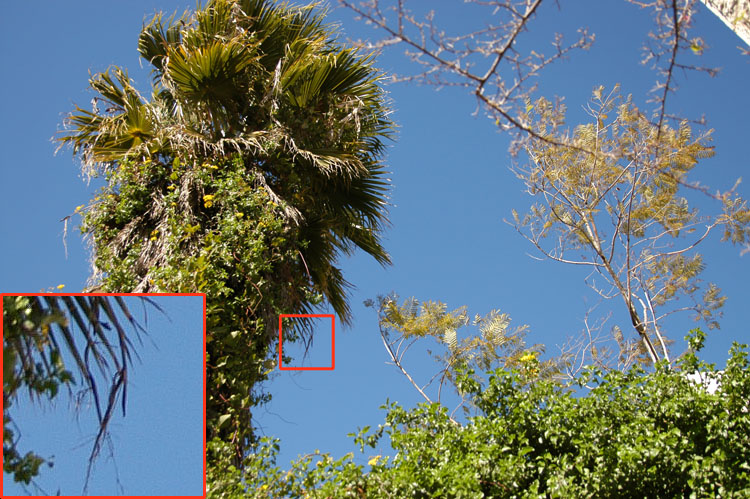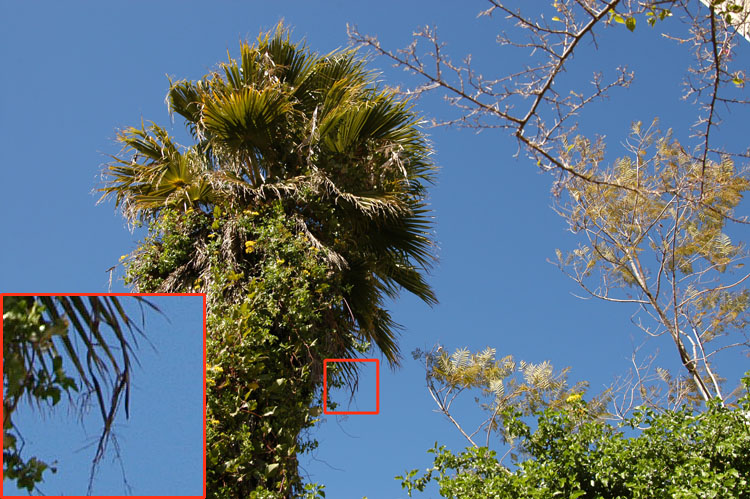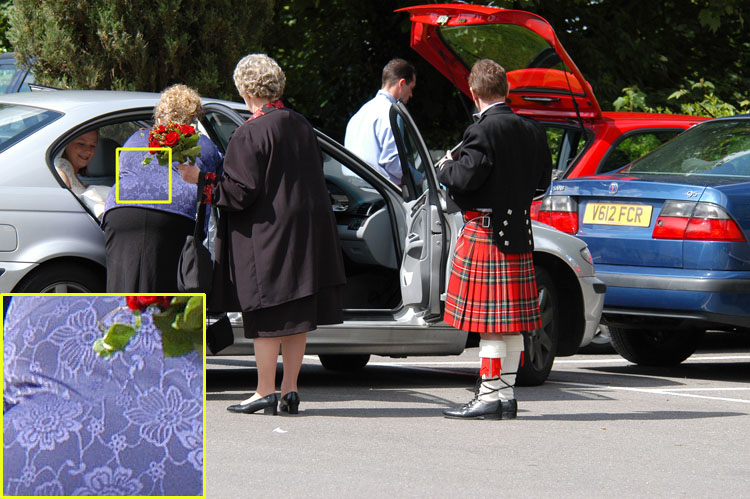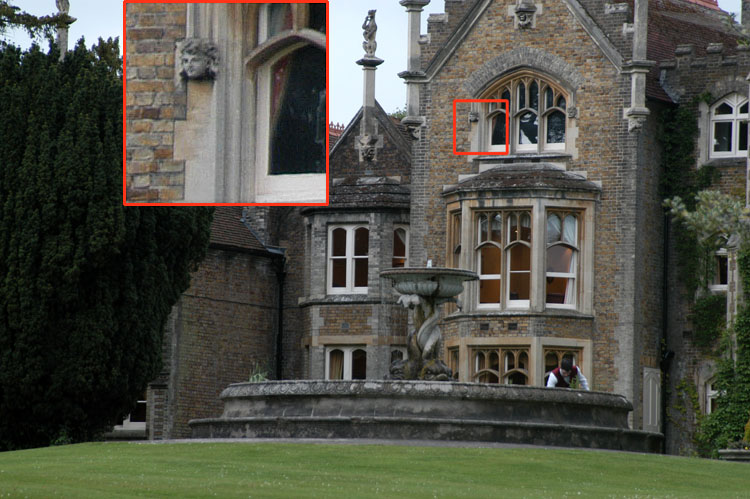|
The “medium range” lens is the lens that usually sits on the camera, and does most of the work for different types of photography. When a long lens is required we replace it with a “tele”, when a wide lens is required we replace it with a “wide”, but most of the time we use the medium range lens.
When I was looking for a medium lens (about 3 years ago) that will cover some wide and some tele, I checked several lenses. It all begins and ends with the penalty of the crop factor of most of the DSLR cameras.
On the long side there is a nice profit of about 50% in the focal length (in Nikon cameras) but there is significant loss on the wide side. A 28mm lens (defined as a wide lens by film photographers) appears as a 42mm lens on the DSLR cameras, hardly wide, closer to being a normal lens.
The lens I used until that moment was the Nikon 28-105mm, which did a good job, but had its limits on both sides, relative to this Tamron lens, which gained high repute in the world.
I had no complaints about the 28-105 sharpness, and closing the aperture to 5.6 kept it sharp all through its range. All this was true before the appearance of the Nikon 24-120 AFS VR lens, and the possibilities back then were limited.
The kit lens of the D100 back then, the AFS 24-85mm, is a good lens, but 85mm is much too short.
After thinking a while, I brought this Tamron directly from the USA. I think I was the first one to have it in Israel.
Some details regarding this lens: The lens is constructed of 14 glass elements arranged in 10 groups.
It has an aspheric element and an ED-like element, which Tamron calls "AD".
The lens is quite bulky and weighs about 530gr.
It can focus real close – to about 40cm, and on film it creates an image of 1:3.3 in size relative to the photographed image. This is almost macro, especially on a digital camera where the image is larger by about 50%.
It has 7 aperture leaves that are slightly curved suggesting a possible pleasant bokeh. It accepts large filters - 72mm in diameter, making it more expensive if one wants to purchase it.
Its price in the USA, prior to various rebates, is approximately $400 and it has maintained this price for the last 3 years, ever since it arrived in the market – indicating that it sells well. It comes with a sunshade that protects it from fingerprints more than from flare.
The lens is quite delicate. It does not have the metal feel and structure of the Nikon/Canon/Tokina. And this is how it looks:  | | Color Space: 65535 |
This lens is very sharp, even at a wide-open aperture. But when closing 1/3 stop or a whole stop it becomes extremely sharp. It produces wonderful colors and its bokeh is very nice indeed. Sometimes you can see the bokeh glitch, especially with the light stripes that are out of focus, but normally it is nice. It is very good as a portrait lens too and covers a wide range.
When shooting against a bright light, it presents minimal CA and it is quite hard to create flare, especially when using a sun shade.
Its close-up photography capabilities are excellent, as we will see in the examples following. Its spherical distortions are minimal – slight barrel distortion and pincushion distortion on the long side, which cannot be detected in daily use, and one needs a fine micron ruler to detect them.
The range on Nikon’s DSLR is 36-202mm, a very nice range. The lens features internal focusing (IF) – and it does not change its length while focusing, a very important feature for close up shooting and for using a tripod.
In addition, it works well with teleconverters. With the 1.4 teleconverter you can hardly notice a change in the picture quality (as we will see later) and also with the x2 teleconverter and closing in one stop, the decrease is very small.
With the 2x teleconverter – the picture is dark in the eye-piece, the lens hardly focuses by itself so manual focusing is required, and an effective aperture of 16, together with an effective focal length of 405mm (including the crop factor), requires a tripod. A 2x TC is not recommended for normal use, unless you must have the extra millimeters.
With the teleconverter, the lens does not report the effective focal length and neither the effective aperture, since it is not an AFS lens, but the correct exposure is achieved, according to the effective aperture.
Generally speaking, the lens does not focus quickly. It’s not slow, but it is far from being an AFS or USM lens. Its zoom ring isn’t easy to turn (meaning that when the lens is hanging downwards, the zoom will not come out alone - a known disease of quite a few zoom lenses called "creeping"). Now, that is enough talking - let’s move on to the samples. It produces lively saturated colors:  | | Model: NIKON D2X Exposure Time: 1/160sec F Number: 5.6 Max Aperture Value: 5 Focal Length: 135mm Exposure Program: Aperture priority Exposure Bias Value: 0 ISO Speed Ratings: 160 Metering Mode: Center Weighted Average White Balance: Auto white balance Flash: Flash did not fire Focal Length In 35mm Film: 202 Date Taken: 2005:03:11 11:53:32 Color Space: sRGB |
Here is an example of a wide-angle picture (24mm) taken with a wide-open aperture (3.5) besides the sharpness, take note of the excellent subtle color shades:  | | Model: NIKON D100 Exposure Time: 1/640sec F Number: 3.5 Max Aperture Value: 3.6 Focal Length: 24mm Exposure Program: Aperture priority Exposure Bias Value: 0 Metering Mode: Pattern White Balance: Auto white balance Flash: Flash did not fire Focal Length In 35mm Film: 36 Date Taken: 2003:05:23 21:16:50 Color Space: sRGB |
Another example that shows its performance at 24mm wide open (f: 3.5) – is very impressive, especially at the center of the frame:  | | Model: NIKON D100 Exposure Time: 1/1000sec F Number: 3.5 Max Aperture Value: 3.6 Focal Length: 24mm Exposure Program: Aperture priority Exposure Bias Value: 0.3333333 Metering Mode: Center Weighted Average White Balance: Manual white balance Flash: Flash did not fire Focal Length In 35mm Film: 36 Date Taken: 2004:12:31 12:20:17 Color Space: sRGB |
When closing the aperture to 5.6 at the wide-angle side, the sharpness rises up to almost the size of the pixel:  | | Model: NIKON D100 Exposure Time: 1/350sec F Number: 5.6 Max Aperture Value: 3.6 Focal Length: 24mm Exposure Program: Aperture priority Exposure Bias Value: 0.3333333 Metering Mode: Center Weighted Average White Balance: Manual white balance Flash: Flash did not fire Focal Length In 35mm Film: 36 Date Taken: 2004:12:31 12:20:25 Color Space: sRGB |
At the extreme tele side, with a wide-open aperture (135/5.6) the results are good:  | | Model: NIKON D100 Exposure Time: 1/640sec F Number: 5.6 Max Aperture Value: 4.6 Focal Length: 135mm Exposure Program: Aperture priority Exposure Bias Value: 0 Metering Mode: Pattern White Balance: Auto white balance Flash: Flash did not fire Focal Length In 35mm Film: 202 Date Taken: 2003:05:24 12:31:56 Color Space: sRGB |
Another example of a picture taken at this state, this time at 1/80 of a second –
hand-held:  | | Model: NIKON D100 Exposure Time: 1/80sec F Number: 5.6 Max Aperture Value: 5 Focal Length: 135mm Exposure Program: Aperture priority Exposure Bias Value: 0 Metering Mode: Pattern White Balance: Auto white balance Flash: Flash did not fire Focal Length In 35mm Film: 202 Date Taken: 2003:05:23 18:20:19 Color Space: sRGB |
When closing a 1/3 stop, at the tele side (to aperture 6.3) – the microcontrast improves:  | | Model: NIKON D100 Exposure Time: 1/250sec F Number: 6.3 Max Aperture Value: 5 Focal Length: 135mm Exposure Program: Aperture priority Exposure Bias Value: 0.3333333 Metering Mode: Center Weighted Average White Balance: Manual white balance Flash: Flash did not fire Focal Length In 35mm Film: 202 Date Taken: 2004:12:31 12:21:40 Color Space: sRGB |
The lens’s bokeh is good but not superb. Notice the sharp contour of the yellow branch (marked with an arrow). A lens with a perfect bokeh would show a creamy contour and not a sharp one:  | | Model: NIKON D2X Exposure Time: 1/250sec F Number: 6.3 Max Aperture Value: 4.8 Focal Length: 78mm Exposure Program: Aperture priority Exposure Bias Value: 0 ISO Speed Ratings: 160 Metering Mode: Center Weighted Average White Balance: Auto white balance Flash: Flash did not fire Focal Length In 35mm Film: 117 Date Taken: 2005:03:11 11:56:42 Color Space: sRGB |
In close up shooting (almost macro), with the aperture closed to 1/3 stop (6.3) the sharpness is superb and the microcontrast is excellent:  | | Model: NIKON D2X Exposure Time: 1/250sec F Number: 6.3 Max Aperture Value: 4.8 Focal Length: 78mm Exposure Program: Aperture priority Exposure Bias Value: 0 ISO Speed Ratings: 160 Metering Mode: Center Weighted Average White Balance: Auto white balance Flash: Flash did not fire Focal Length In 35mm Film: 117 Date Taken: 2005:03:11 11:56:42 Color Space: sRGB |
If one insists and enters the sun into the frame, you can extract some flare from this lens. When shooting very bright elements in day lighting, there is no apparent problem. The flare created when including the sun in the frame is faint, and I had to emphasize it by playing with the contrast. Very reasonable:  | | Model: NIKON D100 Exposure Time: 1/2500sec F Number: 18 Max Aperture Value: 4.6 Focal Length: 65mm Exposure Program: Aperture priority Exposure Bias Value: 0.3333333 Metering Mode: Center Weighted Average White Balance: Auto white balance Flash: Flash did not fire Focal Length In 35mm Film: 97 Date Taken: 2003:05:28 18:11:32 Color Space: sRGB |
With a x1.4 teleconverter (Kenko Pro 300 x1.4), focusing is naturally slower. But under good lighting conditions there is still AF. The results are acceptable, even though the lens had a wide-open aperture (no backwards report regarding the effective aperture which was 8 in this case):  | | Model: NIKON D100 Exposure Time: 1/320sec F Number: 5.6 Max Aperture Value: 5 Focal Length: 135mm Exposure Program: Normal program Exposure Bias Value: 0.3333333 Metering Mode: Spot White Balance: Auto white balance Flash: Flash did not fire Focal Length In 35mm Film: 202 Date Taken: 2002:11:15 09:46:24 Color Space: sRGB |
The bottom line is: This is one of the best medium lenses of its kind, if not the best in its price range. Its price is reasonable and if one is willing to compromise with the difficulty in zooming (which improves with time) and the focus, which sometimes responds slowly – it is the ideal lens for traveling and for situations where “you can only take one lens”.
You cannot compare its performance to the Nikon 17-55 /2.8 or the Canon 24-105, but you cannot compare their prices either.
Definitely worth its price and recommended! |





